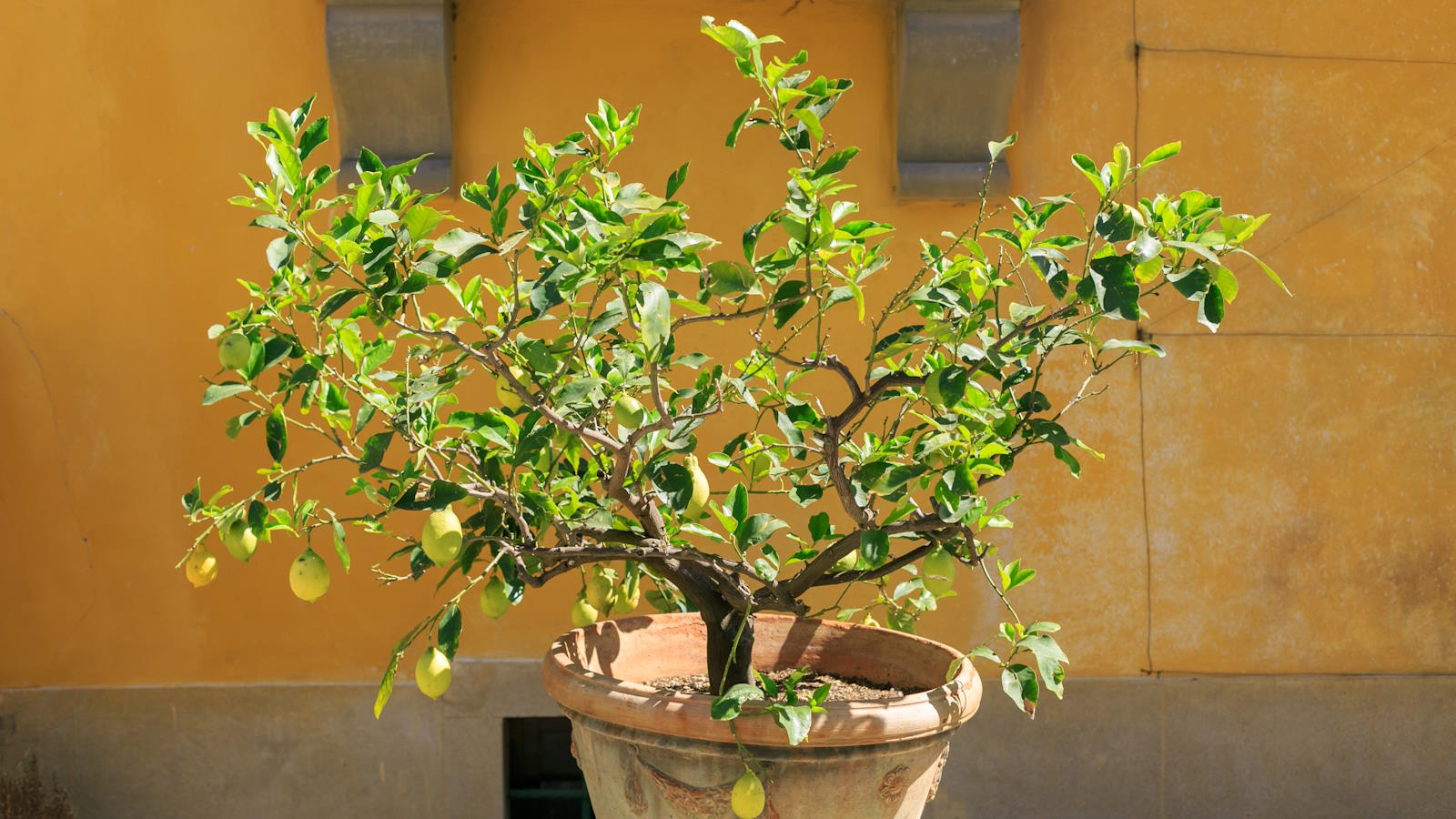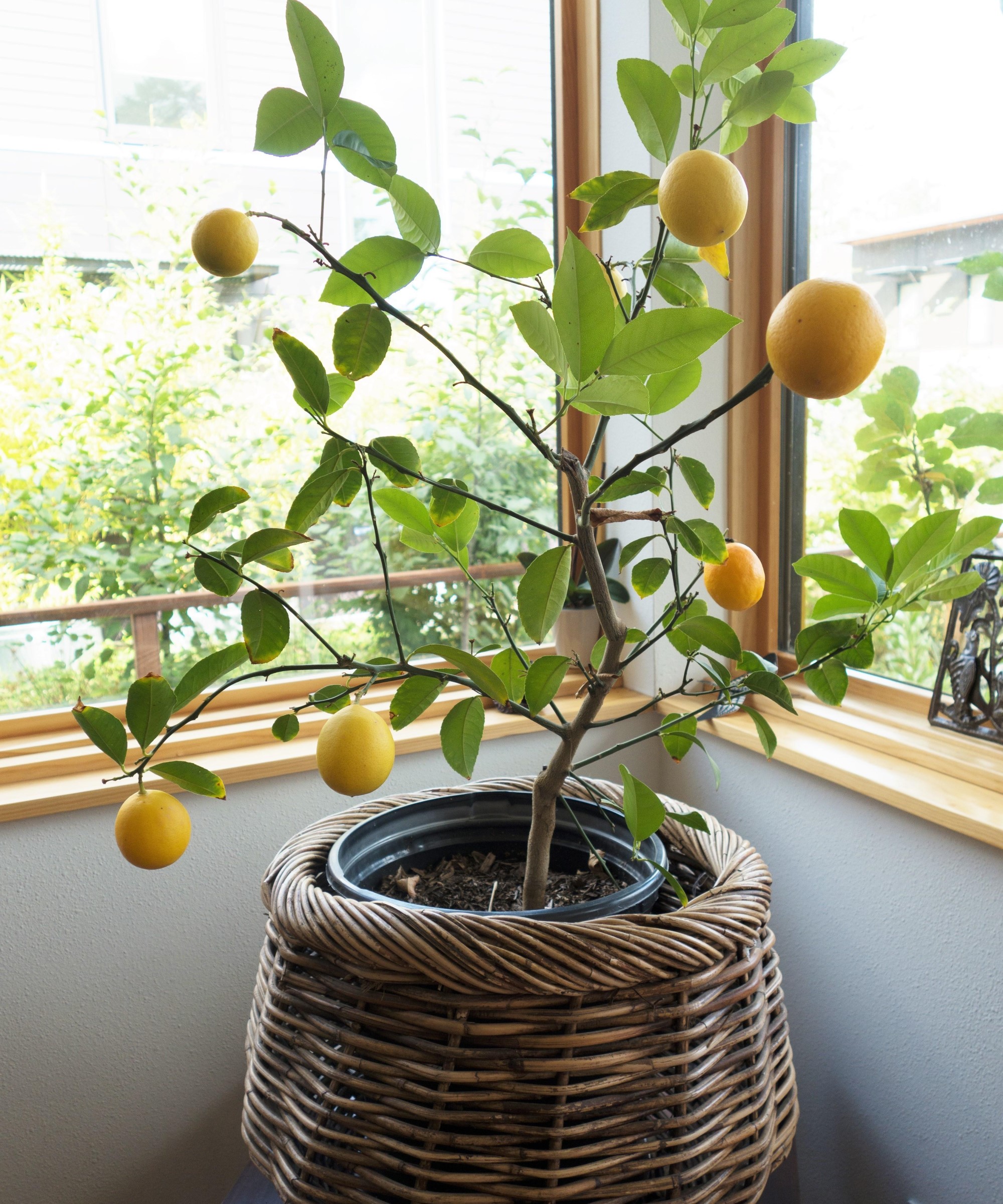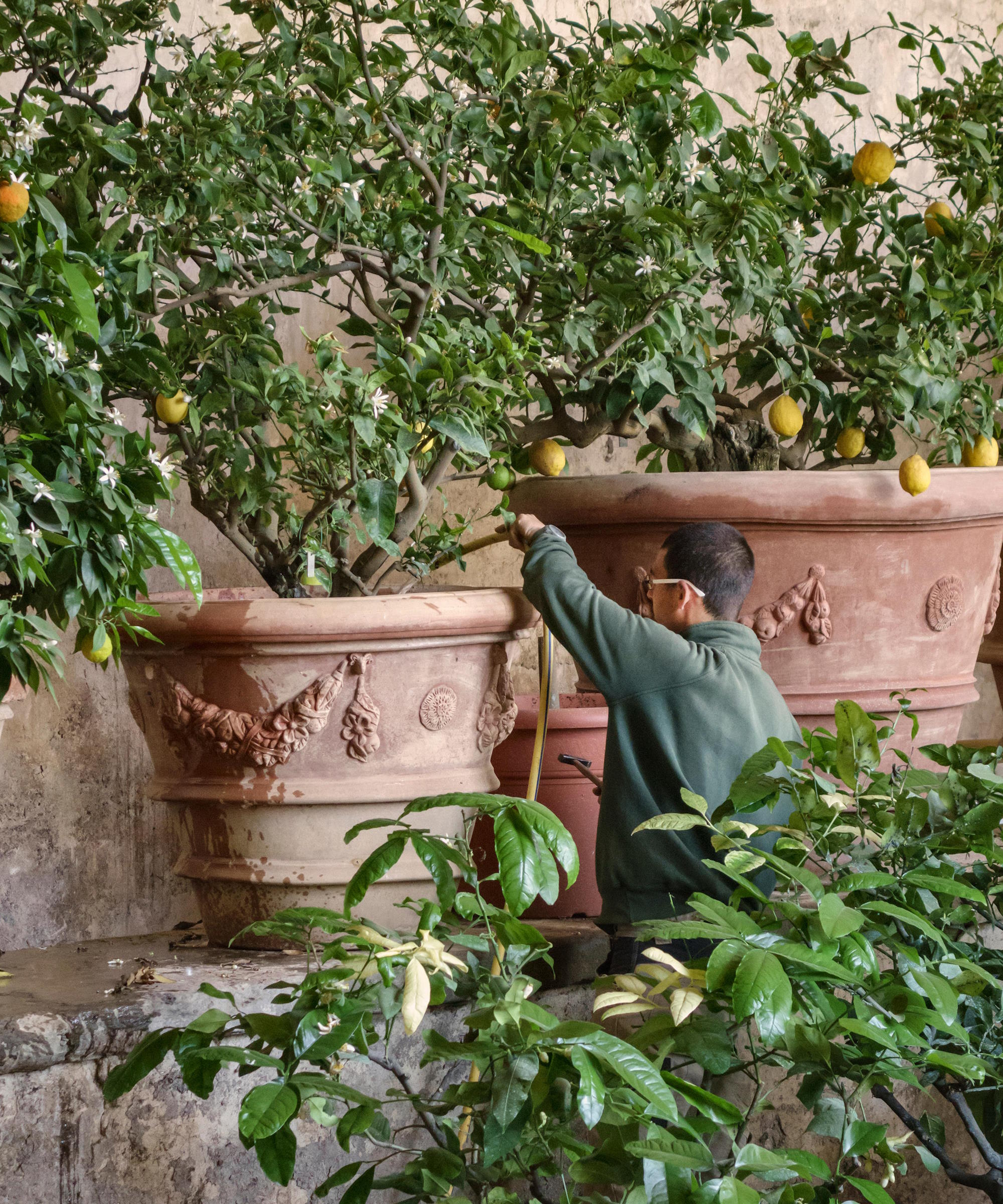I'm a kitchen gardening expert and here is what I've learned about how to care for a potted lemon tree in winter
Discover the important elements of potted lemon tree winter care to keep your plants happy and healthy indoors


Lemon trees make a fantastic addition to any garden space, though do need protection during winter in many climates. The trees are popular choices to grow in pots on decks or patios and the benefit of growing lemon trees in containers is that they can be moved indoors to shield them from damaging frosts and snow.
Growing lemon trees in pots is a great way to add these Mediterranean fruit trees to your backyard, and their fragranced flowers and fruit can appear year-round. Citrus trees in pots, however, do need extra maintenance when it comes to watering and feeding.
I spent several years as a professional gardener for the National Trust in the UK, working at a historic garden that had a large citrus collection, which included many lemon trees. This extensive collection of citrus was grown in pots and maintained throughout the year. The lemon trees in pots were housed for winter in an orangery and brought out for the warmer months to create formal displays around the garden.

There were many lemon trees among the citrus collection I helped to look after at Hanbury Hall and Gardens in the UK
A simple guide to overwintering lemon trees
Lemon trees are one of the best indoor fruit trees you can grow and their beauty and fragrance can brighten up spaces. However, these citrus trees do benefit from the extra light and warmth of being outdoors for the summer months, where they can bring a Mediterranean garden vibe to your backyard ideas. The trees are not fully hardy, and will need to be protected in winter if you live in a cold climate. There are some important care points to be aware of to overwinter citrus trees successfully.
How to care for lemon trees in winter
Lemon trees can handle low temperatures, but only for a short time. Extended periods of cold weather will harm the trees, so they do need protecting from frosts, cold winds, and snow.
Lemon trees in pots are at an increased risk of cold weather, as their roots are more vulnerable than when grown in the ground. Before the first frosts are due for your US hardiness zone, you want to proactively start thinking about protecting your lemon trees.

Lemon trees in pots want a bright spot indoors for winter
Moving trees indoors
Lemon trees will overwinter happily in a frost-free and cool location. We used to keep the collection of large lemon trees in an unheated orangery, but the likes of a shed, unheated greenhouse, or garage would do the job if you have a small number of trees.
Design expertise in your inbox – from inspiring decorating ideas and beautiful celebrity homes to practical gardening advice and shopping round-ups.
Smaller lemon trees in pots can be brought into the house to overwinter - though they will need to be closely monitored for signs of stress throughout their time indoors.
Light and heat
When growing lemon trees indoors, getting the levels of light and heat correct is very important. Light is particularly important when growing citrus inside and you want to make sure that the trees are still getting several hours of direct light a day, even through winter.
Plants indoors can be kept on a south facing windowsill, while a conservatory or greenhouse is ideal for larger lemon trees in pots. Even if they are in a shed or garage, putting them next to a window can provide enough light to sustain them through the colder months.
Lemon trees need temperatures of at least 40°F throughout the winter. If the plants are being overwintered indoors it is important to avoid them getting too much heat. This means not placing them near central heating or radiators, as they can struggle with too much dry air that is produced by home heating systems. The stress caused by being placed near fluctuating extreme temperatures can cause the plants to shed leaves.

Keep potted lemon trees away from extreme heat sources during winter
Watering and feeding
Reduce the level of watering throughout the winter months. Lemon trees do not like sitting in wet soil, especially during the colder periods. Overwatering stresses the plant and can cause lemon leaves to turn yellow and drop, and it can even lead to root rot if they sit in sodden soil for long periods.
When watering plants in containers, check the moisture level a few inches down using your fingers. If the soil has completely dried out, then give the lemon tree a deep water and leave it to dry out before watering again. It is recommended to raise pots up on feet to help water to drain away, such as these Garden Gecko Invisible Pot feet available at Amazon.
Fruit trees in pots always need a lot of feeding throughout the year. Lemon trees do benefit from regular fertilization, however the regularity should drop during the winter months.
In my years looking after potted lemons, the trees were fed every two weeks during the summer and this dropped to once a month once they were moved inside for winter. Use a balanced feed that is formulated specially for citrus trees, such as the Expert Gardener Citrus Plant Food available at Walmart.

Reduce the level of watering during the colder months
Pests
The likes of aphids, red spider mite, and scale insect can all affect lemon trees and come to the fore when they are indoors over the winter period. Regularly monitor your trees throughout their time inside and act quickly if you spot any signs of pests.
Spraying trees with insecticidal soap, available at Amazon or other retailers, or a homemade bug spray solution of water and soap, can often be a good way to get rid of aphids or other small pests.
Pruning
The time to prune a lemon tree is usually from late winter to early spring. Lemon trees do not often require lots of trimming, but plants in pots can be pruned with clean and sharp tools to manage the shape and help promote a bushier tree.
FAQs
How do you overwinter a lemon tree outside?
If you live in a warmer climate where temperatures do not drop regularly below 40°F for long periods, then lemon trees can be overwintered outside.
Pots can be moved to more protected locations, such as near to walls, or you may wrap the pots with hessian or fleece to offer an extra defence in case the temperatures do drop. You could use plant pot covers such as these at Walmart to help protect plants from cold winter temperatures.
Will a lemon tree survive in an unheated greenhouse?
An unheated backyard greenhouse can provide the protection required for lemon trees in pots to survive the winter. It can keep the frost from getting to the trees but is not warm enough over the winter months to stress the plant out.
When the temperatures do rise in the spring, and the sun starts to appear, you will need to open the greenhouse doors during the day to prevent fluctuating temperatures that can affect the lemon tree.
The likes of air conditioning, underfloor heating, and indoor fireplaces can all cause potential issues when caring for houseplants in winter. The simple solution of moving plants as far away as you can from extreme heat sources and fluctuating temperatures is all you need to do to protect houseplants from central heating during the colder months.

Drew has worked as a writer since 2008 and was also a professional gardener for many years. As a trained horticulturist, he worked in prestigious historic gardens, including Hanbury Hall and the world-famous Hidcote Manor Garden. He also spent time as a specialist kitchen gardener at Soho Farmhouse and Netherby Hall, where he grew vegetables, fruit, herbs, and cut flowers for restaurants. Drew has written for numerous print and online publications and is an allotment holder and garden blogger. He is shortlisted for the Digital Gardening Writer of the Year at the 2025 Garden Media Guild Awards.